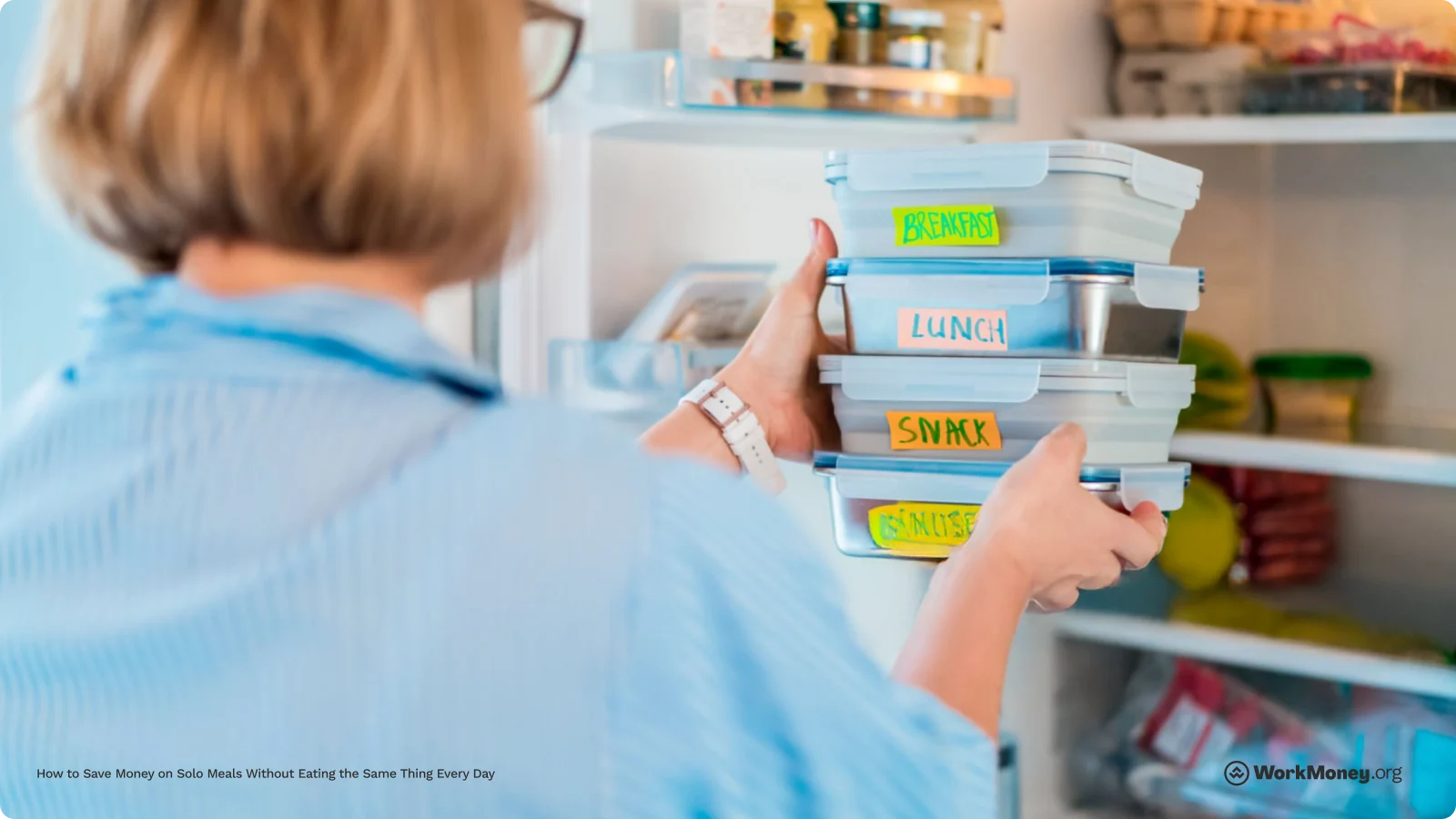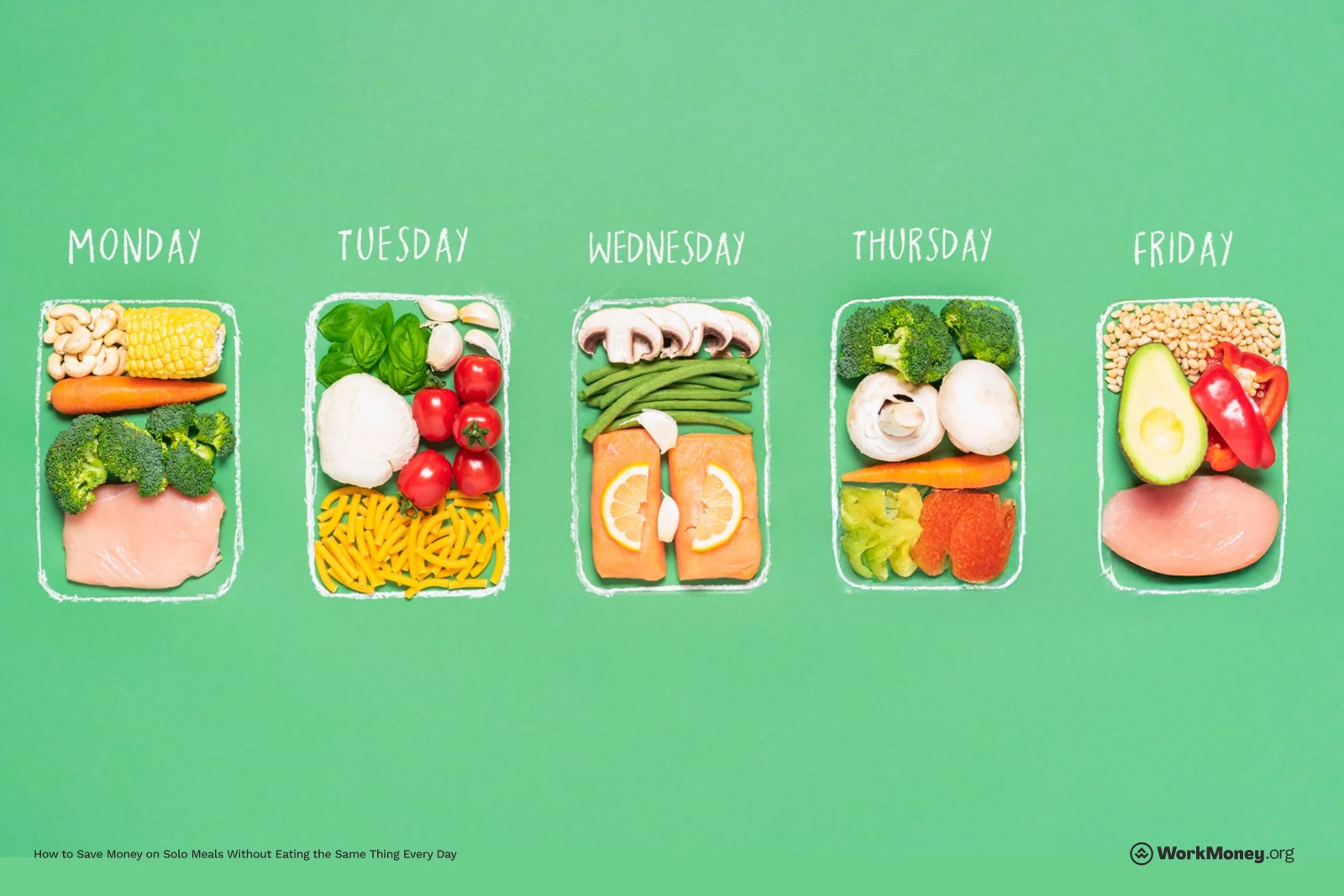SNAP Friendly Meal Prep Ideas That Cut Weekly Food Costs
Stretch your SNAP benefits with easy, budget-friendly meals using simple ingredients and no fancy tools.

The Supplemental Nutrition Assistance Program (SNAP) is a federal program that helps reduce food insecurity for over 42 million Americans. It’s a great resource for those who need it, but stretching out the benefits to cover meals can be challenging. The WorkMoney team is dedicated to helping those with SNAP benefits stretch their dollars as far as possible.
We put together a simple and affordable meal prep calendar tailored to grocery store shoppers on a tight budget, and you don’t need any fancy kitchen appliances along the way.

Smart Meal Prep Basics for SNAP Households
There are a few core ideas to meal prepping without breaking the bank:
Stock Up Smart: Buy shelf-stable and bulk-friendly items like rice, beans, oats, and canned/frozen vegetables. Perishable foods cost a ton when they spoil and have to be thrown away. One study says that the average household wastes $155/month. By focusing your meals on food that doesn’t go bad, you can reduce waste by a lot. Additionally, if you have the room to buy bulk, you can save even more.
Double Duty Ingredients: Plan meals around versatile staples like eggs, rice, and chicken. These ingredients are the base of many meals, which means you can use them in all sorts of recipes.
Batch Cooking Essentials: Cook once, eat multiple times; portion and store for the week.
Appliance-Friendly Cooking: It can be a pain when recipes need several gadgets in the kitchen. Recipes that are either stove-top or oven-friendly can reduce the work and cost of each meal significantly.
Before you run to the store, check to see if you can stack promotions through Instacart to make your grocery haul even cheaper.
Weekly SNAP-Friendly Meal Plan Chart
Each of these cheap meal prep ideas can be made with only a few ingredients. We included recipes to help continue the savings.
Day | Breakfast | Lunch | Dinner | Snack/Extra |
|---|---|---|---|---|
Mon | Oatmeal with banana | Lentil & Veggie Stew | Apple slices with peanut butter | |
Tue | Egg muffin or toast + egg | Tuna or Chickpea Salad Wrap | Rice & Beans with salsa | Popcorn (stovetop or bag) |
Wed | Leftover oatmeal + cinnamon | Chicken tacos (leftover chicken) | Carrot sticks with hummus | |
Thu | Toast with peanut butter | Frittata square + toast | Banana or canned fruit | |
Fri | Egg + rice breakfast bowl | Tuna salad with crackers | Stir-fried rice with egg & veggies | Yogurt |
Sat | Pancakes or leftover frittata | Homemade trail mix (seeds + raisins) | ||
Sun | French toast (with stale bread) | Leftovers or wraps | Use up extras: mix & match bowl | Popcorn or toast with cinnamon sugar |
This entire week can add up to less than $40 per week in food when planned out correctly.
Tips to Reduce Food Waste and Save More
Food waste is a big problem, but the good news is that we can all help fix it. One easy way to reduce food waste is by planning your meals before you go shopping. Make a list of what you need and try not to buy extra things that might go bad before you eat them. Also, keep an eye on expiration dates and eat older food first. A simple trick is to move older items to the front of the fridge or pantry so you see them first.
Another great tip is to get creative with leftovers. Instead of throwing them away, turn them into new meals! For example, extra chicken from dinner can become a sandwich or salad topping the next day. You can also freeze food that you won’t eat right away to save it for later. Reducing food waste not only helps the planet but also saves you money.
Lastly, there’s the money aspect to keep track of. There are a few apps that can help you stay on track. Propel allows you to check the balance of your EBT card quickly. And if you favor going to one grocery store, be sure to sign up for their rewards program to save even more.
Final Thoughts
Food prices have gone up significantly in recent years, even more than inflation, according to Axios. So if you’re feeling the pinch at the grocery store, know you aren’t alone. A recent LendingTree survey noted nearly 90% of shoppers are changing their shopping habits.
This solution shouldn’t be implemented overnight, but rather slowly over time. It can be startling to shift your entire kitchen and cooking routine, so maybe start slowing building in lower-cost foods. The important part is consistently focusing on your weekly routine to make sure you’re saving as much as possible.
The best part is that you don’t have to sacrifice on getting the nutrients you need or being stuck with bland food. You can have great meals and save money at the same time.
About the Author

Brett Holzhauer
Brett Holzhauer is a Certified Personal Finance Counselor (CPFC) who has reported for outlets like CNBC Select, Forbes Advisor, LendingTree, UpgradedPoints, MoneyGeek and more throughout his career. He is an alum of the Walter Cronkite School of Journalism at Arizona State. When he is not reporting, Brett is likely watching college football or traveling.

